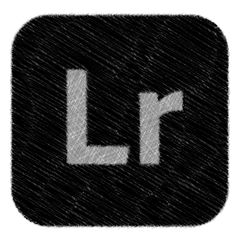
Chapter 11: Recovering highlights in your DNGs in Lightroom for iPad.
The Leica Q2 Monochrom journal.
Why are highlights so important to an image? For starters, overexposed highlights lost to pure white are more obvious than shadows lost to pure black. But sometimes with DNG files, highlights may look like they’ve been lost when they haven’t, so they’re recoverable. Other times they can be made less obvious in editing. This entry gives you some techniques for restoring them, as well as some tips on how to make overexposure not stand out as much.
There are many techniques and all may not work on any particular image. Many times you’ll find yourself using multiple techniques together.
Triage first: Find out what’s actually lost.
DNG files have substantial latitude. What may look to be pure white may not be. To check in Lightroom on your iPad:
- Open the Light menu.
- Don’t mess with the Exposure slider.
- Put both fingers on the White slider and slide slightly to the left or right. The image will turn black. When the slider is at zero, any white area will indicate where there’s overexposure. If you can slide the slider at all to the right without getting white, there’s still a range of highlights that may look white, but is actually subtle gray.
Whether you have overexposure or just almost, the following techniques can also help you better manage your highlights.
Technique 1: Reduce the Highlights slider.
This can pull highlights back into a visible range or add some gray to the overexposure.
Technique 2: Reduce the White slider.
This can also pull highlights back into range, but works on the brightest highlights first.
Technique 3: Increase the Shadows slider.
The first two techniques can darken the image. But if there’s overexposure, they can make it more obvious. Lightening shadows can restore tone and make the overexposed areas less noticeable .
Technique 4: Mask the sky.
Sometimes the sky can look overexposed, but there may still be tone there.
- Tap the mask icon on the right (circle with broken line around it).
- Tap +.
- Tap Select Sky.
- Drag the Exposure slider left. Overexposed areas will become gray the further left you drag.
- Tap Done.
Technique 5: Use a graduated filter.
This is most commonly used to restore tone in the sky.
- Tap the mask icon on the right (circle with broken line around it).
- Tap +.
- Tap Linear Gradient.
- Put your finger on the screen near the top of the image and drag down. The area you can affect will turn red.
- Drag the Exposure slider left. Overexposed areas will become gray the further left you drag.
- Tap Done.
Technique 6: Targeting highlights.
This is useful for targeting and reducing smaller overexposed highlights like the sun, lightbulbs, shine on chrome, etc. You can then gray them a little to keep them from being so obvious.
- Zoom in on the highlight area.
- Tap the mask icon on the right (circle with broken line around it).
- Tap +.
- Tap Radial Gradient.
- Put your finger at the center of the highlight and slowly drag down diagonally until it’s covered in red
- Drag the Exposure slider left.
- Tap Done.
My take.
Recovering highlights is a balancing act using all (or some) of the above techniques. Big tip here: Don’t make your overexposed areas obvious. Some techniques will darken areas around overexposed highlights, which can make the overexposure stand out more. Try the various techniques, but make sure you keep the fixes looking organic.
Next Entry: Painting with Light
Like this series? Consider buying me a coffee below

Photography Leica Q2 Monochrom